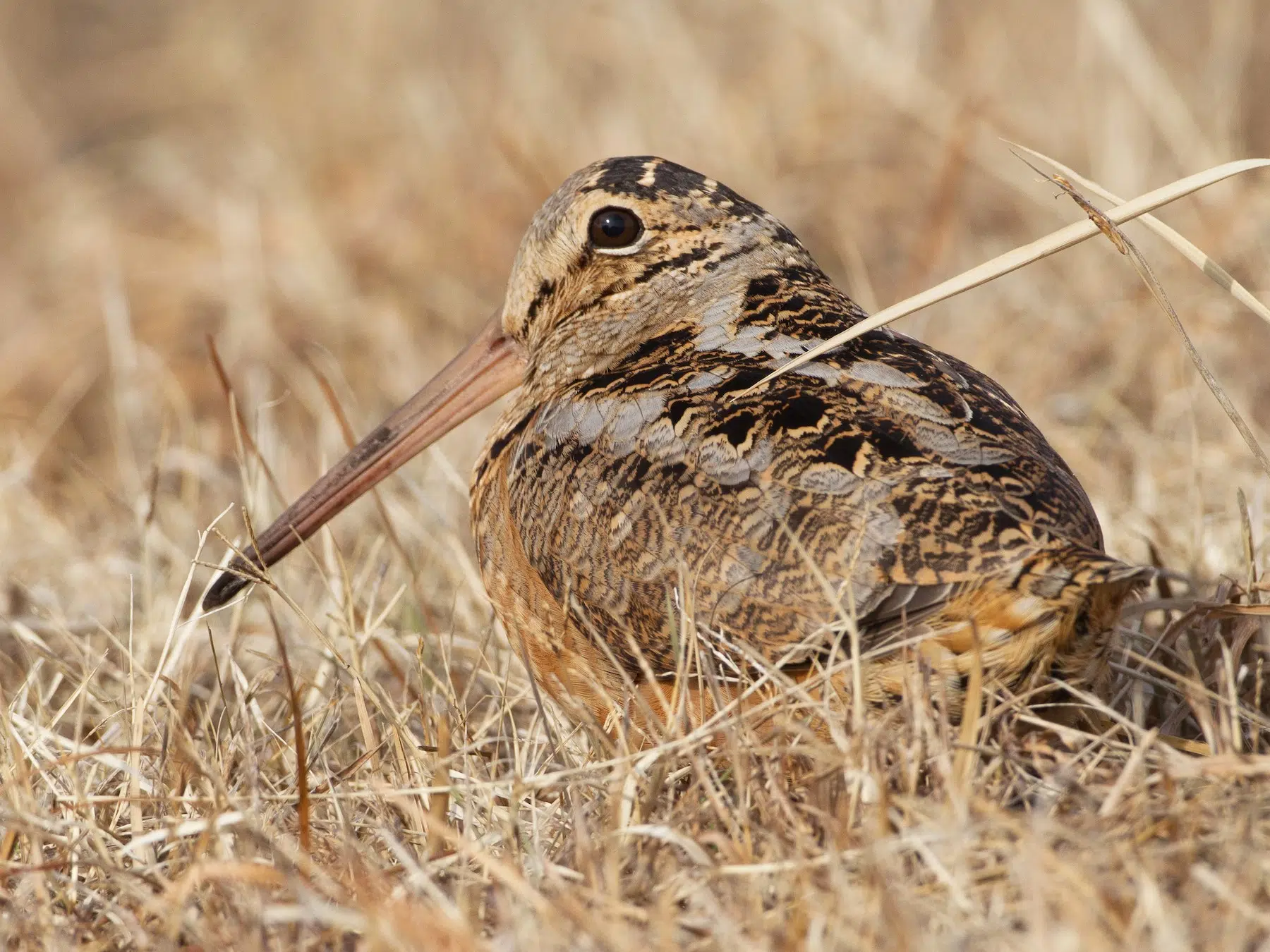Written by Ben Schiltz
Much of the work done at Woodland Dunes Nature Center and Preserve is focused on restoring and preserving the vital swale habitats near the lake Michigan shoreline. This includes managing the wetlands devastated by the invasive emerald ash borer beetle through tree and shrub plantings. Although restoring these habitats is a big undertaking, sightings from the native wildlife are great reminders that make every bit of time and energy worthwhile.
While planting trees within the wetlands I came to a small clearing with an open canopy unknowingly standing above a group of American Woodcocks roosting underneath the cover of sedges. Moments later the group of birds flew into the open sky displaying their signature bills and round bodies. A startling but beautiful reminder of the importance of preserving these valuable landscapes. Although these shorebirds are common (least concern) in Wisconsin, the population has seen a decline since the early 70s which can be attributed to a loss of young forest and shrubland habitat. Sightings are not very common as the Woodcock can be rather elusive.
The species is native to Wisconsin favoring younger forests or early successional stands. Aspen, Maple, and mixed conifer-hardwood forest are common habitats of the Woodcock. Similar to the swale habitat, the birds are attracted to moist soils where grubs and other insects are easily accessible with dense vegetation providing cover from predators. Beginning mid- September, migrations occur to the southeast states such as Georgia, Florida, and South Carolina.
Experiencing the many wildlife of the swales, such as the American Woodcock, wild turkey, and whitetail deer, have all been remarkable reminders of the importance of habitat restoration and the vital role it has on the forest’s health. Ensuring the wetlands remain forested will provide beneficial resources to the wildlife species of Woodland Dunes for years to come.












